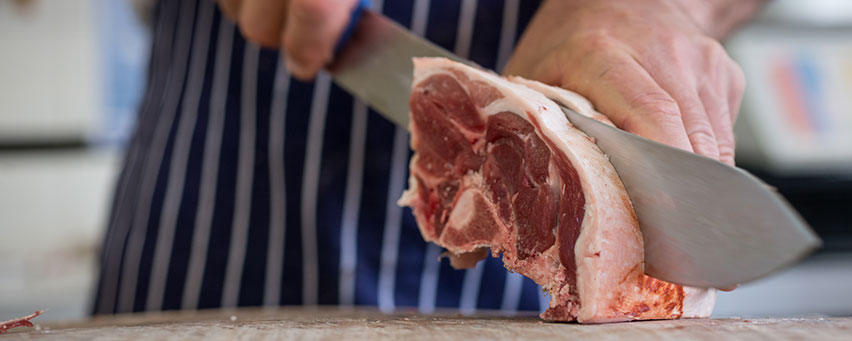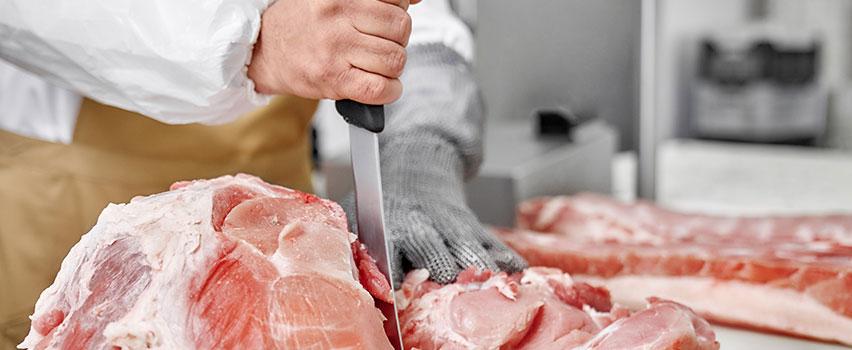What’s the difference between a forged and stamped butchers knife?
Whether you’re a professional butcher or you’re just starting out on your culinary adventures, you might well have heard some people talk about their preference for forged knives or stamped butchers knives. So that probably gives rise to the very simple question - what are these differences? And even more importantly - do they actually matter? We’ll give you the facts, and let you be the judge!
The differences at a glance
Essentially, forged knives are cut from a single bar of steel, and generally have a tang (more on that in just a moment). They’re made to exacting standards from high quality materials, making them more expensive and more durable. Stamped knives, on the other hand, are cut from a single sheet of steel, and generally don’t have a tang. They’re more affordable, but they often don’t last as long. So, let’s explore it in a bit more detail.
Everything you need to know about forged butchers knives
As we’ve just touched on above, a forged knife is made from a single bar of steel. That steel is heated to extreme temperatures and then pounded expertly into shape, traditionally by very skilled craftsmen. Today, the job is often done by machines.
Forged butchers knives typically have quite thick and rigid blades which hold their edges very well, even under the most intensive or demanding applications such as commercial or industrial kitchens.
It’s pretty easy to spot a forged knife by its bolster, which is the name for the wider lip on the end of the blade, where it meets the handle. (We’ve talked about these at length in our post about the anatomy of a butchers knife.) The bolster is designed to add weight near the centre of the knife, helping to give it a nice sense of balance. That makes it a favourite of professional butchers and chefs, who will generally grip it between the thumb and the forefinger.
Forged knives can also be distinguished by what’s called a tang. This is basically an extension of the metal blade that extends all the way down through the handle, noticeable by the characteristic rivets down its length. On some forged knives, the metal might run down the edge of the handle. It helps to extend the knife’s durability and enhance its balance, and it’s therefore well-known as a mark of quality for butchers knives.
Here’s how forged butchers knives are manufactured:
A computer-aided design is used for the knife mould
Bars of solid steel are cut in advance, before being heated to extremely high temperatures
Now red-hot, the steel is pressed into shape
The resulting blades are tempered (heat-treated) to set their hardness, and grinding is used to give them their sharp edge
The blades are cleaned, polished and inspected
Next the handles are attached, and the knives are subjected to a finishing process for their bolster and tang
The forged butchers knives are then sharpened to a pre-set angle, before being packaged up ready for use

Everything you need to know about stamped butchers knives
The main difference between forged knives and stamped knives is that while forged knives are cut from bars of solid steel, stamped knives are laser-cut from a large sheet of steel. (Vaguely like a cookie cutter, if you like.) This results in butchers knives that are thinner and more flexible than their forged counterparts, as well as often being lighter by quite some margin.
They also don’t share the durability of forged butchers knives, and are faster to lose their edge. However, they’re notably more cost-effective. All this makes them better suited for casual cooks and domestic environments, rather than the heavy-duty commercial applications that forged knives are used for.
The manufacturing process for stamped knives is relatively straightforward:
The knife design is programmed into a dedicated cutting machine
Large sheets of metal are inserted into the cutter
The knives are then cut out from each sheet of metal
Next, each individual knife is tempered, and honed to increase its strength and durability
Finally, the knives are subject to a final inspection before being packaged up, ready for use
Which is better - forged knives or stamped knives?
You wouldn’t be hard-pressed to find plenty of people who’d say that forged knives are inherently better than stamped knives, given their higher quality and durability. However, to be honest that might be an overly-simplistic way of looking at it, as the best choice for you really depends on your individual skill and intended application.
As we’ve mentioned a few times already, forged knives are generally best suited to the most intensive applications like professional butchers shops or commercial kitchens. Their quality puts them in an excellent position to stand up to the daily stresses they’ll face in these environments, while still delivering the kind of reliability that a professional would expect. But if you’re not a professional butcher and you’re just looking for a useful knife to help you prepare meals at home, or for small groups, you’ll probably find that a stamped knife more than meets your requirements.
It’s also worth noting that the lines between forged and stamped knives are becoming increasingly blurred. Stamped knives aren’t automatically inferior - you can find plenty of high-quality stamped knives from manufacturers like Victorinox, who produce butchers equipment that’s just as good as the more well-established forged knives. Besides, many knives today are manufactured through a combination of the two techniques, further fuzzing the distinction between them.
Whichever one you’ve got your heart set on, you can find a fantastic selection of both right here at Butchers Equipment Warehouse. We stock a huge range of butchers knives and sharpeners, as well as a broad choice of butchers machinery and butchers spares and consumables, ideal for any private or commercial kitchen. If you need any advice or you’re looking for anything in particular, don’t hesitate to give us a call on 01254 427761. We’re here to help!




